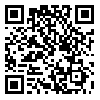1. Habibi P, Momeni R, Dehghan H. [Relationship of environmental, physiological, and perceptual heat stress indices in Iranian Men]. Int J Prev Med. 2015;6.[Persian]
2. Miller VS, Bates GP. The Thermal Work Limit is a simple reliable heat index for the protection of workers in thermally stressful environments. Ann Occup Hyg. 2007;51(6):553-61. [
PMID]
3. Naserpour M, Jafari MJ, Monazzam MR, Shahneshin P, Reza H, Jam Bar Sang S. [Evaluation of Students' Cognitive Performance while Exposed to Heat using Continues Performance Test]. Journal of Occupational Hygiene Engineering. 2014;1(2):1-9. [Persian]
4. RODAHL K. Occupational health conditions in extreme environments. Ann Occup Hyg. 2003;47(3):241-52. [
PMID]
5. Hocking C, Lau WM, Silberstein R, Roberts W, Stough C. The effects of thermal strain on cognition. DTIC Document; 2000. [
PMCID]
6. Hancock P, Vasmatzidis I. Effects of heat stress on cognitive performance: the current state of knowledge. International Journal of Hyperthermia. 2003;19(3):355-72. [
DOI:10.1080/0265673021000054630] [
PMID]
7. Knez I. Affective and cognitive reactions to subliminal flicker from fluorescent lighting. Conscious Cogn. 2014;26:97-104. [
DOI:10.1016/j.concog.2014.02.006] [
PMID]
8. Cajochen C. Alerting effects of light. Sleep Med Rev. 2007;11(6):453-64. [
DOI:10.1016/j.smrv.2007.07.009] [
PMID]
9. Vandewalle G, Maquet P, Dijk D-J. Light as a modulator of cognitive brain function. Trends in cognitive sciences. 2009;13(10):429-38. [
DOI:10.1016/j.tics.2009.07.004] [
PMID]
10. Smolders KC, De Kort YA, Cluitmans P. A higher illuminance induces alertness even during office hours: Findings on subjective measures, task performance and heart rate measures. Physiol Behav. 2012;107(1):7-16. [
DOI:10.1016/j.physbeh.2012.04.028] [
PMID]
11. Partonen T, Lönnqvist J. Bright light improves vitality and alleviates distress in healthy people. J Affect Disord. 2000;57(1):55-61. [
DOI:10.1016/S0165-0327(99)00063-4]
12. Stranks JW. Human factors and behavioural safety: Routledge; 2007. [
PMID]
13. Golbabaei F, Mazloumi A, Mamhood Khani S, Hosseini M, Abbasinia M, Fahang Dehghan S. The Effects of Heat Stress on Selective Attention and Reaction Time among Workers of a Hot Industry: Application of Computerized Version of Stroop Test. Journal of Health and Safety at Work. 2015;5(1):1-10.
14. Mackworth N. Researches on the measurement of human performance. Med Res Council Spec Rep Ser. 1950(268).
15. Bell PA, Loomis RJ, Cervone JC. Effects of heat, social facilitation, sex differences, and task difficulty on reaction time. Human Factors: The Journal of the Human Factors and Ergonomics Society. 1982;24(1):19-24. [
DOI:10.1177/001872088202400103]




